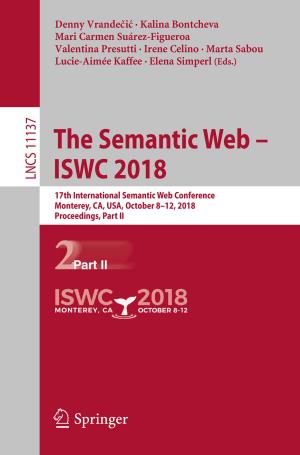Microorganisms in Foods 7
Microbiological Testing in Food Safety Management
Nonfiction, Science & Nature, Science, Biological Sciences, Microbiology, Technology, Food Industry & Science| Author: | International Commission on Microbiological Specifications for Foods (ICMSF) | ISBN: | 9783319684604 |
| Publisher: | Springer International Publishing | Publication: | February 22, 2018 |
| Imprint: | Springer | Language: | English |
| Author: | International Commission on Microbiological Specifications for Foods (ICMSF) |
| ISBN: | 9783319684604 |
| Publisher: | Springer International Publishing |
| Publication: | February 22, 2018 |
| Imprint: | Springer |
| Language: | English |
The second edition of Microorganisms in Foods 7: Microbiological Testing in Food Safety Management updates and expands on information on the role of microbiological testing in modern food safety management systems. After helping the reader understand the often confusing statistical concepts underlying microbiological sampling, the second edition explores how risk assessment and risk management can be used to establish goals such as a “tolerable levels of risk,” Appropriate Levels of Protection, Food Safety Objectives or Performance Objectives for use in controlling foodborne illness.
Guidelines for establishing effective management systems for control of specific hazards in foods are also addressed, including new examples for pathogens and indicator organisms in powdered infant formula, Listeria monocytogenes in deli-meats, enterohemorrhagic Escherichia coli in leafy green vegetables, viruses in oysters and Campylobacter in poultry. In addition, a new chapter on application of sampling concept to microbiological methods, expanded chapters covering statistical process control, investigational sampling, environmental sampling, and alternative sampling schemes.
The respective roles of industry and government are also explored, recognizing that it is through their collective actions that effective food safety systems are developed and verified. Understanding these systems and concepts can help countries determine whether imported foods were produced with an equivalent level of protection.
Microorganisms in Foods 7 is intended for anyone using microbiological testing or setting microbiological criteria, whether for governmental food inspection and control, or industrial applications. It is also intended for those identifying the most effective use of microbiological testing in the food supply chain. For students in food science and technology, this book provides a wealth of information on food safety management principles used by government and industry, with many references for further study.
The information was prepared by the International Commission on Microbiological Specifications for Foods (ICMSF). The ICMSF was formed in response to the need for internationally acceptable and authoritative decisions on microbiological limits for foods in international commerce. The current membership consists of fifteen food microbiologists from twelve countries, drawn from government, universities, and food processing and related industries.
The second edition of Microorganisms in Foods 7: Microbiological Testing in Food Safety Management updates and expands on information on the role of microbiological testing in modern food safety management systems. After helping the reader understand the often confusing statistical concepts underlying microbiological sampling, the second edition explores how risk assessment and risk management can be used to establish goals such as a “tolerable levels of risk,” Appropriate Levels of Protection, Food Safety Objectives or Performance Objectives for use in controlling foodborne illness.
Guidelines for establishing effective management systems for control of specific hazards in foods are also addressed, including new examples for pathogens and indicator organisms in powdered infant formula, Listeria monocytogenes in deli-meats, enterohemorrhagic Escherichia coli in leafy green vegetables, viruses in oysters and Campylobacter in poultry. In addition, a new chapter on application of sampling concept to microbiological methods, expanded chapters covering statistical process control, investigational sampling, environmental sampling, and alternative sampling schemes.
The respective roles of industry and government are also explored, recognizing that it is through their collective actions that effective food safety systems are developed and verified. Understanding these systems and concepts can help countries determine whether imported foods were produced with an equivalent level of protection.
Microorganisms in Foods 7 is intended for anyone using microbiological testing or setting microbiological criteria, whether for governmental food inspection and control, or industrial applications. It is also intended for those identifying the most effective use of microbiological testing in the food supply chain. For students in food science and technology, this book provides a wealth of information on food safety management principles used by government and industry, with many references for further study.
The information was prepared by the International Commission on Microbiological Specifications for Foods (ICMSF). The ICMSF was formed in response to the need for internationally acceptable and authoritative decisions on microbiological limits for foods in international commerce. The current membership consists of fifteen food microbiologists from twelve countries, drawn from government, universities, and food processing and related industries.















